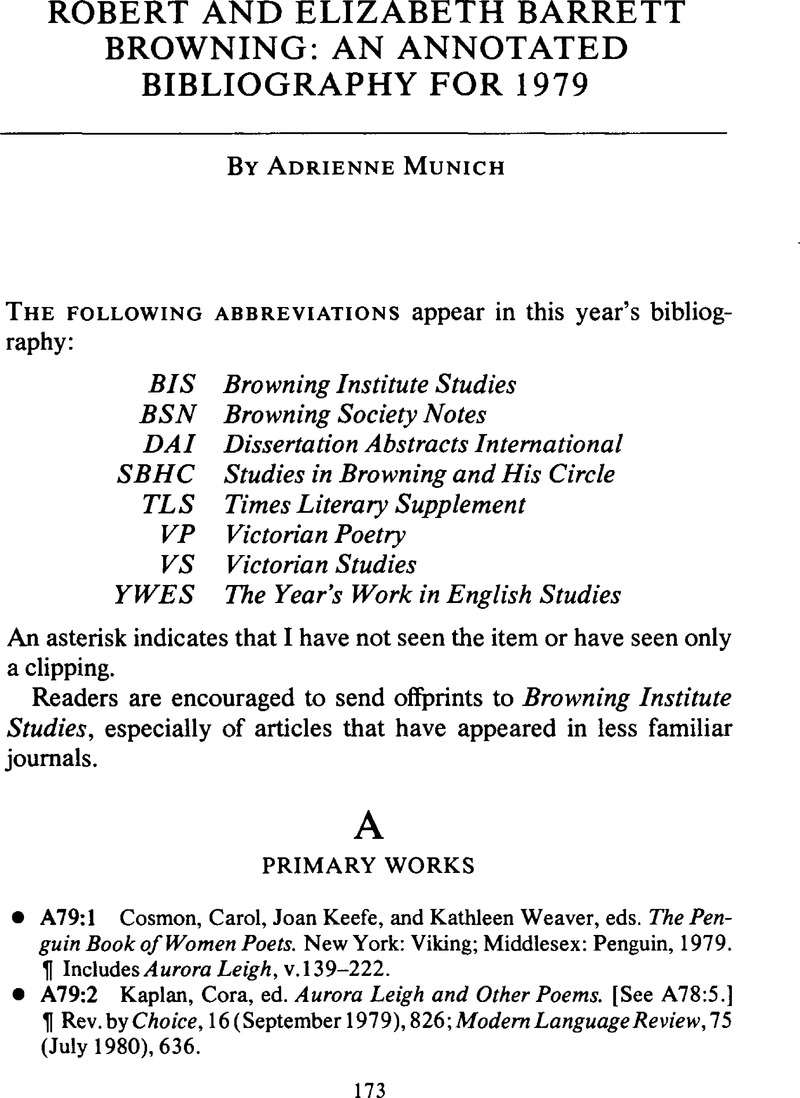• C79:6Bloom, Harold, and
Adrienne, Munich, eds.
Robert Browning: A Collection of Critical Essays. (Twentieth-Century Views.)
Englewood Cliffs, N.J.:
Prentice-Hall,
1979. pp.
207. ¶ Harold Bloom, “Reading Browning” (pp. 1–12): “Browning teaches his readers not only the sublime necessities of defense against his poems' self-interpretations, but also a healthy suspicion that poet and reader alike are rhetorical systems of many selves, rather than any single or separate self” (p. 2). George M. Ridenour, “Four Modes in the Poetry of Robert Browning” (pp. 13–28):
Rb's attempts to unify elements of reality as he perceived them may be broken down into at least four major types: personal, typical, mythic, and analytic. Ann Wordsworth, “Browning's Anxious Gaze” (pp. 28–38) [see C79:66]. Leslie Brisman, “Back to the First of All: “‘By the Fireside’ and Browning's Romantic Origins” (pp. 37–58): the poem “invites inquiry about the abstract idea of the ‘infinite moment,’ and … about the personality of all the great revelatory moments in the dramatic monologue” (p. 39). Loy D. Martin, “The Inside of Time” (pp. 59–78): The interaction between language and literary form can be traced in the dramatic monologue. John Killham, “Browning's ‘Modernity’:
The Ring and the Book and Relativism” (pp. 79–99) [see C69:2]. John Hollander, “Robert Browning: The Music of Music” (pp. 100–22):
Rb's active engagement with the flow of structured sound, his understanding of “music's meaning.” Harold Bloom, “Good Moments and Ruined Quests” (pp. 123–47) [see C77:ll]. Robert Langbaum, “Browning and the Question of Myth” (pp. 148–66) [see C66:31, C70:39]. Adrienne Munich, “Troops of Shadows: Browning's Types” (pp. 167–87): “By reading
Pauline and the
Parleyings as a pair enclosing the major works, it becomes clear that Browning represented himself by using a typological framework” (p. 168). Richard Howard, “November, 1889” (pp. 188–200): A dramatic monologue in which RB speaks. With chronology and bibliography.
Google Scholar 